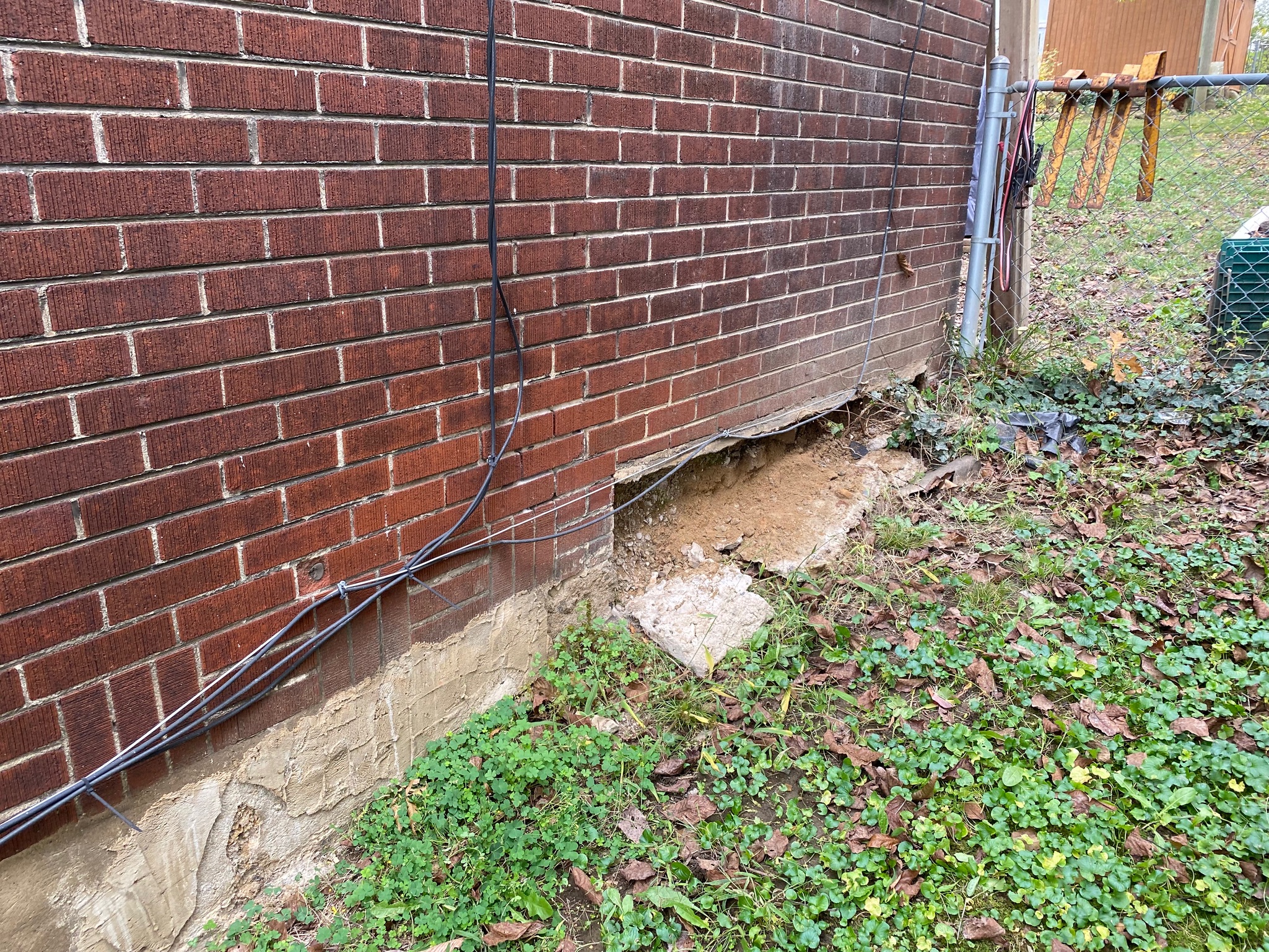
You’ve likely heard about expansive soils and their potential to cause foundation shifting, but have you ever wondered exactly how this process unfolds? Envision this: the soil beneath your home absorbs water, swells, and exerts force on your foundation. Then, during dry periods, it shrinks back, leaving gaps. This constant push-pull can wreak havoc on a building’s foundation, leading to distressing signs like cracks and misalignment. But what factors influence this soil behavior, and more importantly, how can you mitigate its damaging effects? Let’s explore.
Key Takeaways
- Expansive soils, rich in clay minerals, absorb water and expand, leading to shifts in foundations.
- Seasonal changes and weather conditions, such as drought or heavy rainfall, exacerbate the shrink-swell cycles of expansive soils, causing instability.
- Soil movement due to expansion and contraction can directly impact foundation stability, leading to shifts and potential structural damage.
- Indicators of foundation shifting due to expansive soils include cracks in walls, dampness, and sticky doors or windows.
- Managing expansive soils through soil compaction, chemical treatments, and proper drainage can help prevent foundation shifting.
Understanding Expansive Soils
The mystery of expansive soils is one that has perplexed homeowners and engineers alike. It’s no simple task to understand these soils, but let’s explore it. You need to understand soil properties and composition to grasp the devilish behavior of expansive soils.
These soils contain high amounts of clay minerals, which have a unique ability to absorb water and expand, a phenomenon known as shrink swell. Moisture levels play a significant role in this process. When it’s dry, the soil contracts, and when it’s wet, it expands.
This constant cycle of shrinking and swelling can lead to ground movement, causing distress to your home’s foundation. Geological factors, such as the soil’s age and origin, also contribute to its expansive nature.
Environmental influences, like climate and rainfall patterns, can exacerbate the shrink swell cycle. For instance, if you live in an area that experiences heavy rainfall followed by dry spells, you’re more likely to deal with expansive soils.
The Science Behind Soil Expansion
Expanding on your knowledge of expansive soils, let’s discuss the science behind soil expansion. The process primarily revolves around clay minerals, moisture content, and soil compaction. When these factors interact, they can create shrink swell conditions, affecting foundation stability.
- Clay minerals: These are a key component of the soil composition. Specific clay minerals possess the ability to absorb water, causing the soil to expand.
- Moisture content: The amount of water in the soil directly impacts its expansion. Higher moisture content leads to greater soil expansion and vice versa.
- Soil compaction: It’s a geotechnical engineering method used to increase the soil’s load bearing capacity. However, it can also intensify soil expansion if not managed properly.
- Shrink swell conditions: These refer to the soil’s tendency to shrink when dry and swell when wet. This constant movement can compromise foundation stability.
To manage this, soil testing and effective drainage systems are essential. Proper soil testing informs you about the soil’s properties, including its expansion potential.
And efficient drainage systems help manage the moisture content, reducing soil expansion and maintaining foundation stability.
Impact of Weather on Soil Behavior
Ever wondered how changes in weather can dramatically influence soil behavior? Well, let’s explore it.
At the heart of the matter, you’ll find soil moisture. It’s directly affected by rain patterns and humidity levels. When it rains, the soil absorbs the water, increasing its moisture content. Similarly, high humidity can lead to condensation, further moistening the soil.
But what happens when things dry up? Drought conditions can cause the soil to lose this moisture, leading to contraction.
Temperature fluctuations and seasonal changes play a notable role too. In the freeze-thaw cycle, soil expands when water within it freezes and contracts when it thaws. Temperature changes also affect the soil’s clay content, altering its behavior.
The soil composition, particularly the clay content, is another key factor. Clay expands when wet and shrinks when dry, hence directly impacting soil behavior.
Lastly, don’t overlook the vegetation effects. Plants draw water from the soil, influencing its moisture levels. In turn, they affect the soil’s behavior, especially during seasonal changes.
Together, these factors can considerably alter the soil’s behavior, leading to foundation shifting.
How Soil Movement Affects Foundations
Imagine your home’s foundation as a ship sailing on a sea of soil. Just like a ship is influenced by the sea’s currents, your foundation is affected by the soil’s movement. The soil types, moisture content, and clay minerals beneath your home can greatly impact the foundation stability.
- Soil Types: Different soil types react differently to moisture and pressure. Clay soils, rich in clay minerals, expand when wet and shrink when dry, putting constant pressure on your foundation.
- Moisture Content and Seasonal Changes: The amount of water in the soil and seasonal changes can lead to soil compaction or expansion, causing the foundation to shift.
- Vegetation Effects and Drainage Solutions: Trees and large shrubs absorb water from the soil, causing it to dry out and contract.
Drainage solutions and landscape grading can help manage the soil’s moisture content, reducing foundation instability.
- Construction Techniques: Good construction techniques, including soil compaction and proper drainage installations, can provide a stable base for your foundation, minimizing movement.
Warning Signs of Foundation Shifting
As the soil beneath your home becomes a shifting sea, your foundation may start showing signs of distress.
It’s crucial to stay alert for these early warnings, as catching foundation shifting sooner rather than later can save you a bundle in repairs.
One of the first things you’ll notice is crack patterns, either on your home’s exterior or interior.
They might appear small at first, but if left untreated, they’ll grow in size and severity.
You might see diagonal cracks running along your walls, or horizontal ones on your basement floor.
Cracks around doors and windows are also a common sign.
Changes in your home’s moisture levels can also indicate foundation shifting.
If you’ve started noticing dampness in areas where it wasn’t before, it’s a red flag.
Unexpected pooling of water around your property, too, is worth investigating as this could mean the foundation is uneven, causing poor water drainage.
Sticky doors and windows that used to open and close smoothly may also signal foundation problems.
If they’re suddenly difficult to operate, it could be due to a shifting foundation.
Foundation Damage From Expansive Soils
You mightn’t realize it, but the soil beneath your home can wreak havoc on your foundation. It’s all about the soil moisture and the clay composition. Expansive soils expand when wet and shrink while drying, affecting the foundation stability.
The damage from expansive soils to your foundation happens in four main ways:
- The soil’s expansion can exert significant pressure on your foundation, causing it to shift and crack, compromising its structural integrity.
- Seasonal changes affect soil moisture levels, causing the soil to expand and contract, leading to foundation instability.
- A lack of proper drainage solutions can lead to over-saturation of the soil, heightening its expansive properties.
- Incorrect moisture control can lead to a constant cycle of drying and wetting of the soil, causing repeated foundation movement.
Without proper soil testing, you might be unaware of the type of soil beneath your home. If it’s expansive, it can lead to significant and costly damage to your foundation.
Understanding the relationship between the soil and foundation stability is key to preventing serious structural issues.
Solutions to Mitigate Soil Expansion
While the potential damage from expansive soils can be intimidating, don’t lose hope. There are viable solutions to mitigate soil expansion. One of the key strategies is soil stabilization methods which involve altering the soil to improve its physical properties.
You can also apply moisture control techniques to maintain a consistent level of moisture in the soil, thereby reducing expansion and contraction. Implementing drainage solutions such as proper grading around the foundation can also help control water accumulation.
Landscaping strategies can further improve drainage while also enhancing your property’s aesthetics. Foundation reinforcement options, like the use of piers or wall anchors, can strengthen your foundation against the pressures of expanding soil.
Don’t overlook soil compaction practices and chemical treatments either. Compaction reduces the soil’s capacity to absorb water, and certain chemical treatments can minimize its expansiveness.
Effective vegetation management, such as the removal of trees and plants near the foundation, can also reduce soil moisture. Lastly, don’t hesitate to seek professional help. Engineering assessments can identify at-risk areas, and excavation techniques can be used to replace the expansive soil.
Professional Assessment and Repair Options
Now, let’s turn your attention towards professional assessment and repair options.
It’s essential to know how experts evaluate soil-related damage and the techniques they use for foundation repair.
Understanding these aspects can empower you to make informed decisions when dealing with expansive soils and foundation shifting.
Evaluating Soil-Related Damage
In the midst of soil-related issues, professional assessment and repair options become paramount. You’re not in this alone. Skilled professionals can assess the soil moisture, composition, and ground stability around your home, giving you a clear picture of the situation.
They understand the effects of clay minerals and can evaluate the structural integrity of various foundation types. Your assessment may reveal some hard truths about your property. It might show that seasonal changes are wreaking havoc on the soil around your home, or that your current drainage solutions aren’t up to the task.
But these professionals don’t just diagnose the problem – they offer solutions. Here are four steps they might take:
- Monitor the soil moisture levels regularly to detect changes.
- Conduct a thorough analysis of the soil composition, identifying the presence of expansive clay minerals.
- Evaluate ground stability, checking for shifts that might affect your home’s foundation.
- Examine the structural integrity of your foundation and suggest appropriate repair options.
Foundation Repair Techniques
After diagnosing the soil-related issues, the next step professionals undertake is determining the best foundation repair techniques for your home. Your home’s foundation type, either pier and beam or slab, greatly influences the chosen repair method.
For homes with pier and beam foundations, professionals may opt for underpinning methods such as installing helical piers to add stability. They’ll dig beneath the affected area, attach piers to the foundation, and use hydraulic equipment to lift and stabilize your home.
On the other hand, slab foundations might require soil stabilization techniques. Experts use a process which injects a solution into the soil, expanding and filling gaps, firming it up, and reducing movement.
Drainage solutions can also be essential in addressing expansive soil problems. Proper soil grading and moisture control can prevent water build-up around your home’s foundation, limiting soil expansion.
Frequently Asked Questions
What Types of Buildings Are Most Vulnerable to Expansive Soil Damage?
Residential structures and commercial buildings are most vulnerable to expansive soil damage.
You’d think skyscrapers might be at risk, but it’s actually low-rise buildings that suffer the most. This is because they’re often built on shallow foundations, which are more susceptible to soil expansion.
Are There Insurance Policies That Cover Foundation Shifting Due to Expansive Soils?
Yes, there are insurance policies that cover foundation shifting due to expansive soils.
You’ll need to specifically look for soil insurance or foundation coverage in the policy details.
It’s not always included in standard home insurance policies, so you may need to add it on.
It’s essential to understand the specifics of your coverage, as it can save you thousands in repair costs if you’re in an area with expansive soils.
How Often Should I Get My Foundation Inspected for Potential Soil Expansion Issues?
You should have your foundation inspected for potential soil expansion issues at least once a year.
Regular foundation maintenance helps spot problems early.
Keep an eye on the soil moisture around your home, too. If it’s consistently wet or dry, it could indicate a problem.
Don’t ignore cracks or shifts in your foundation; they’re signs of potential soil expansion.
Always consult a professional if you notice changes.
What Are the Costs Associated With Repairing Foundation Damage Caused by Expansive Soils?
Repairing foundation damage from expansive soils isn’t cheap.
Costs depend on several factors like the extent of damage and repair methods used. Minor repairs could run a few thousand dollars, while major ones can exceed tens of thousands.
It’s best to get a quote from a professional to understand the full scope and price.
Can Landscaping Techniques Help in Reducing the Impact of Expansive Soils on Foundations?
Yes, landscaping techniques can greatly reduce the impact of expansive soils on foundations.
By incorporating smart landscaping drainage, you’re able to direct water away from your home, limiting soil expansion.
Proper moisture control is also essential; by maintaining consistent soil moisture levels, you’ll prevent excessive soil swelling and shrinking, which often leads to foundation shifting.
Conclusion
To sum up, you mustn’t underestimate the damage expansive soils can inflict on your foundation. Their fluctuating size, governed by weather patterns, can make your home’s base unstable, leading to significant structural issues. Watch for warning signs like cracks or misalignment. However, don’t worry, there are ways to mitigate soil expansion. If you’re in doubt, seek professional help to assess the situation and provide repair options. Your home’s stability is worth that extra step!

Seal-tite Basement Waterproofing Co. is a full service basement environment contractor. We carry an A+ Better Business Bureau rating. We repaired over 40,000 homes and structures in Virginia, West Virginia, Tennessee, and North Carolina. We are fully insured and licensed. We have worked in all types of locations, including residential and commercial locations, government agencies, colleges, hospitals, churches, and condo associations.
Seal-tite® offers a lifetime transferable warranty. We carry a Class A Contractor’s License and we are fully insured. Our satisfied customers range from government agencies to businesses, hospitals, colleges, churches, and thousands of homeowners. Your home is probably the single largest investment you will make in your lifetime. Don’t wait, call Seal-tite® to help make your home dry, safe and livable.

